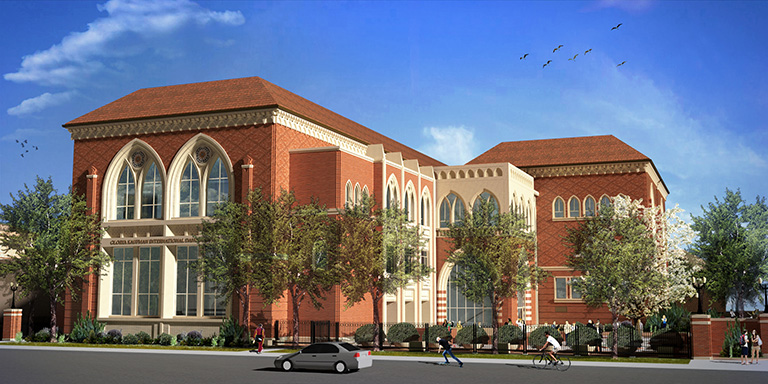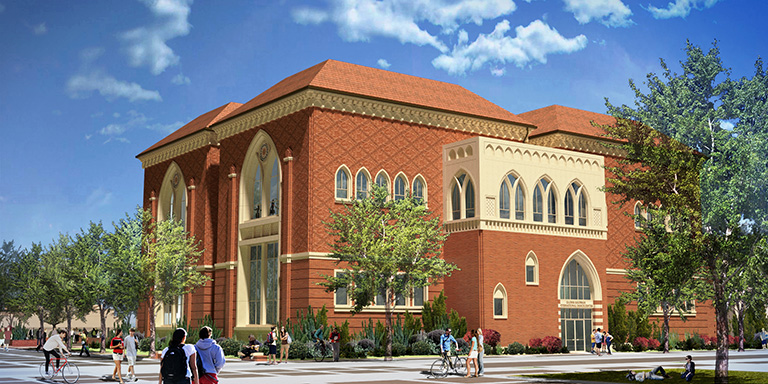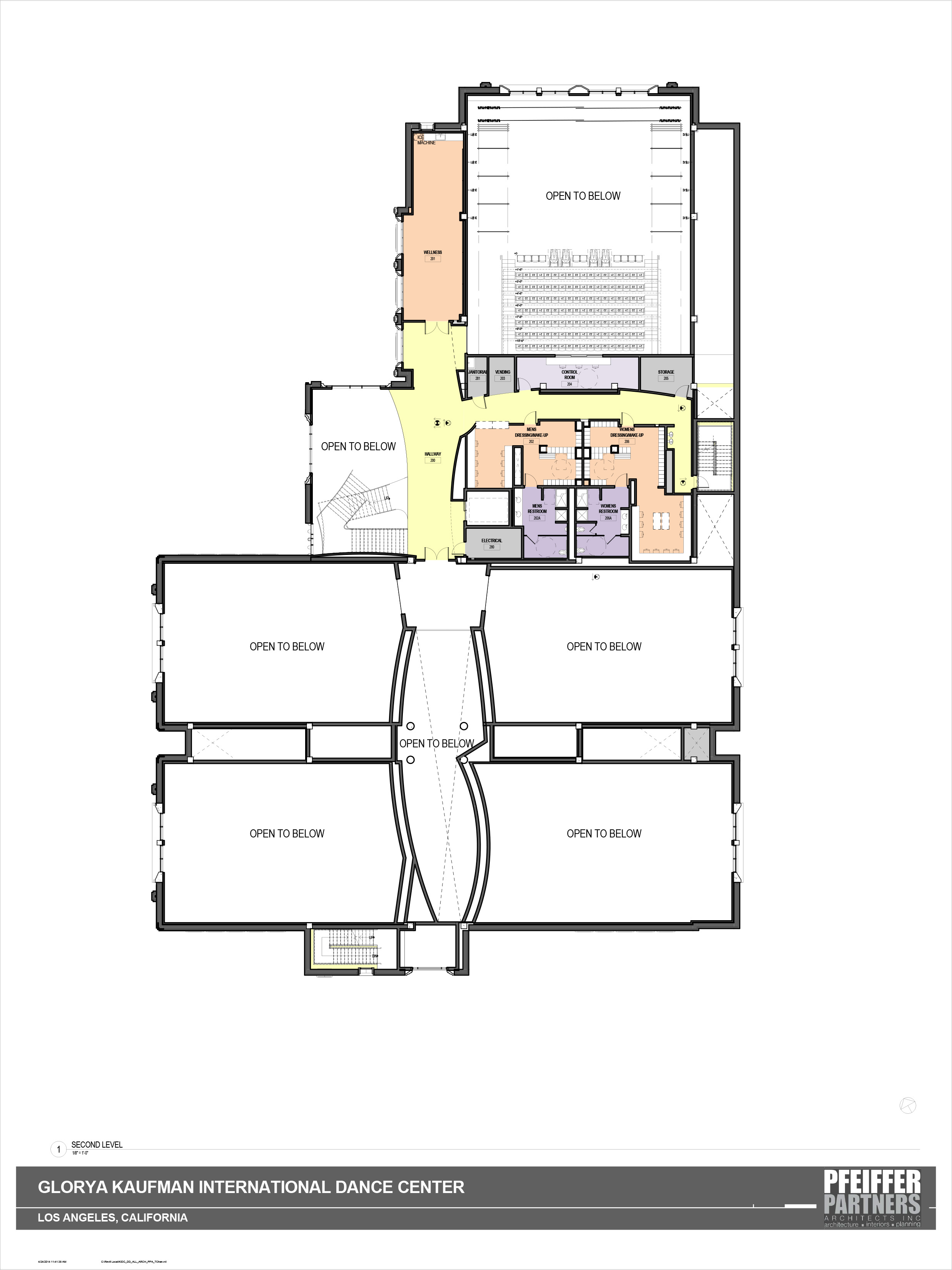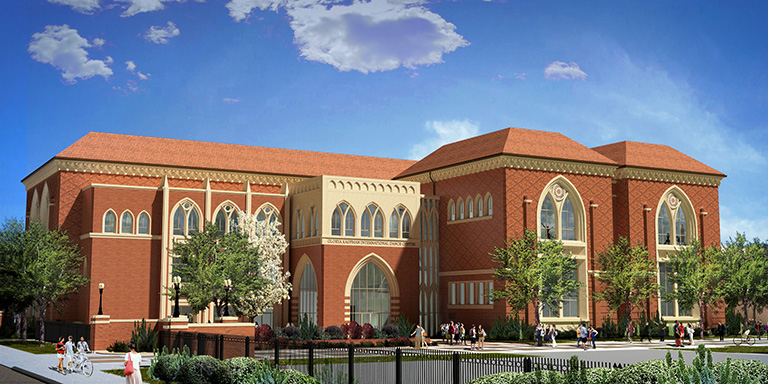Ground was broken on April 23 for the new
Glorya Kaufman International Dance Center on the
University of Southern California campus. Named for the donor, philanthropist Glorya Kaufman, the Center will be a home for dance education on the West Coast and the Pacific Rim. The endowment will fund the building and establish a bachelor of fine arts program combining dance instruction with business training and a liberal arts education.
Pfeiffer Partners is designing the building for the school, the first new school on the campus in 40 years, beginning with a concept design, a feasibility study and programming. The design team, USC faculty and leadership of the new school are working together to craft a new facility that physically and aesthetically connects to the rest of campus and reflects the University’s master plan goals and aspirations for the new school. The program for the three-story building will include a dance/performance studio, five dance studios, instructional classrooms, performer support spaces, costume storage, and faculty and administrative offices. The project also includes a significant outdoor courtyard in which the campus community can meet, interact and study in an environment that fosters creativity and innovation in teaching and dance.
Prominently located near the Thornton School of Music, on West 34th Street at Watt Way, will function as a key transitional building from the main campus to the future university village being developed across Jefferson Boulevard. The center’s proximity to downtown Los Angeles’ Music Center, where Kaufman has sponsored several dance performances, will strengthen the whole area’s draw as a cultural destination.
One primary goal of the design is to achieve a contemporary building that reflects the University’s historic architectural precedents, rooted in Romanesque traditions and Collegiate Gothic style, with authenticity rather than mimicry of the past. Conceptually, the design presents a dynamic, highly contemporary dance facility clothed in tradition.

“The building derives its strengths from the principles of traditional Gothic architecture, but is also inspired by Venetian Gothic vernacular. The building’s massing is broken into its components: five major dance studios and a dance performance room, which is expressed in the architecture of the fenestration and hierarchy of forms; large Gothic arched openings introduce generous amounts of natural light into the spaces as well as create monumental openings for major and minor entries into the building. The skin of the building will be Roman brick with large expanses articulated with a diaper pattern. The building’s floor-to-ceiling windows and detailed articulation of precast concrete will extend the richness of the campus’ architectural language to the street for the first time along Jefferson Boulevard,” explains Project Director William Murray, AIA, Principal with Pfeiffer Partners.












